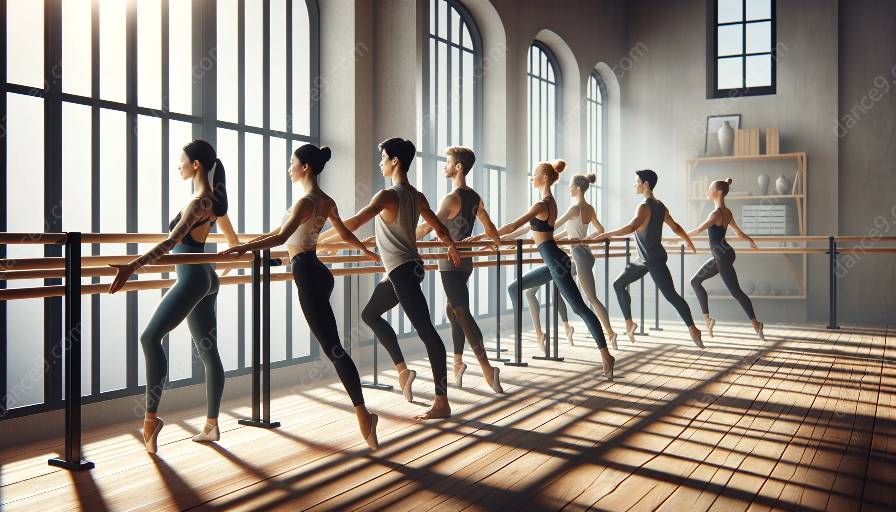Incorporating barre exercises into dance curricula provides numerous benefits for dancers, including enhanced strength, flexibility, and technique. This article explores the compatibility of barre exercises with dance classes, offering insights into the methods and advantages of integrating these two practices.
Understanding Barre Exercises
Barre exercises, originally derived from ballet, emphasize the use of a stationary handrail (or barre) to support the body while performing various movements. These exercises target specific muscle groups, improve balance, and enhance alignment, making them highly beneficial for dancers of all styles and levels.
Benefits of Barre Integration
When integrated into dance curricula, barre exercises can significantly improve a dancer's performance. The consistent practice of barre exercises helps build strength, especially in the legs, core, and upper body, contributing to better execution of dance movements. Moreover, the focus on alignment and posture during barre work can result in improved technique and reduced risk of injury.
Enhancing Flexibility and Control
Barre exercises also promote flexibility and control, which are essential qualities for dancers. The repetitive nature of barre movements enables dancers to lengthen and stretch their muscles, leading to increased flexibility. Additionally, the controlled movements performed at the barre help dancers develop better muscular control and precision in their dance technique.
Integration into Dance Classes
Integrating barre exercises into dance classes can be seamlessly achieved by incorporating them into warm-up and conditioning routines. This allows dancers to reap the benefits of barre work while enhancing their overall dance training. Instructors can design class structures that seamlessly transition from barre exercises to dance sequences, creating a well-rounded and comprehensive training experience.
Creating Stronger, More Versatile Dancers
By integrating barre exercises into dance curricula, instructors can contribute to the development of stronger, more versatile dancers. The combination of traditional dance techniques with the strengthening and aligning aspects of barre work can produce well-rounded performers who possess both grace and power.
Conclusion
The integration of barre exercises into dance curricula presents a valuable opportunity for dancers to enhance their physical capabilities and technical skills. This comprehensive approach to training not only promotes strength, flexibility, and control but also cultivates a deeper understanding of the body's mechanics. By recognizing the compatibility of barre exercises with dance classes, educators and dancers alike can embrace a holistic approach to dance training, fostering the growth and potential of the next generation of dancers.













































































